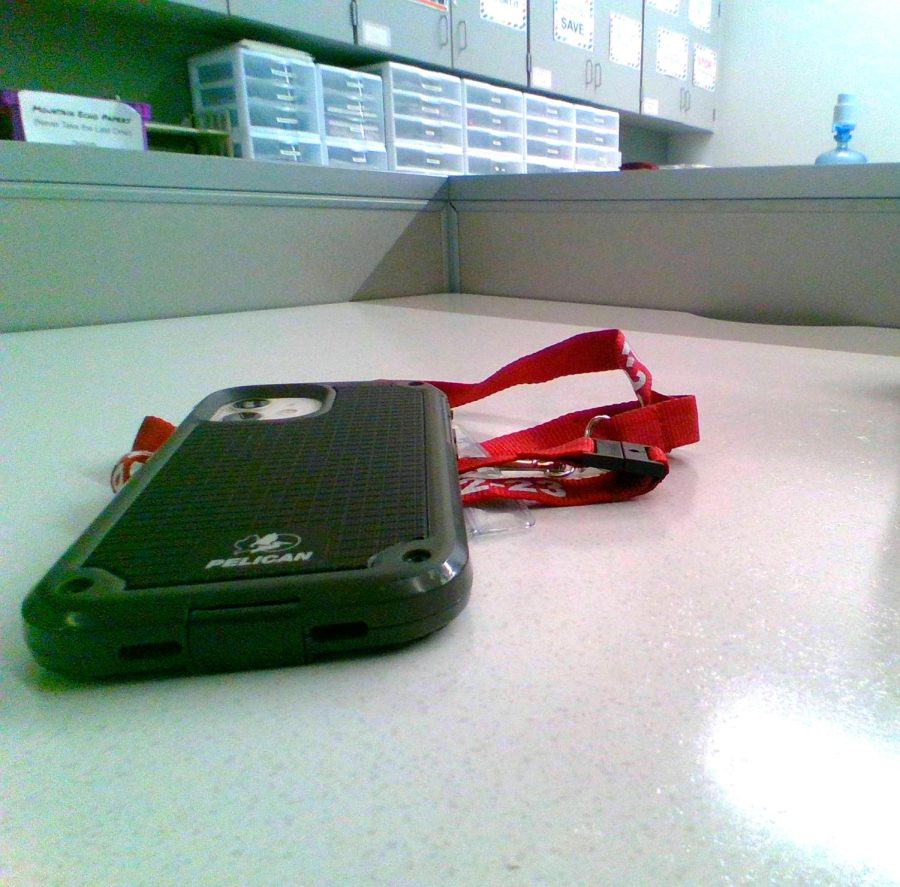Old rules about headphones, lanyards find new enforcement
With the enforcement of these rules, students will have to leave behind their phones and put their lanyards on to stay out of trouble.
As a high school student, I’ve always known that certain things like cell phones and headphones were banned at school. It’s also well known that wearing an ID and lanyard is mandatory. However, recently, the school administration announced they will be enforcing these rules much more strictly, with random checks for IDs and earbuds, and urging teachers to enforce the rules. This decision is a bad one.
Enforcing strict rules against cell phones and headphones in school is not only unrealistic but also detrimental to the learning environment. The world we live in today is driven by technology, and it is becoming increasingly difficult for students to detach themselves from their devices. In fact, some studies have shown that allowing students to listen to music while they work can actually enhance their productivity and focus. By enforcing strict rules against these devices the school administration is doing a disservice to the student’s learning experience.
Moreover, students’ lives are not limited to the classroom; they have lives outside of school that are also affected by these rules. Cell phones and headphones are essential tools for communication and entertainment, which many students rely on to cope with stress and anxiety. By prohibiting these devices at school, the school administration is essentially cutting off students from their support systems which can cause them to feel even more isolated and stressed out. This can have serious consequences for mental health and wellbeing which should be a top priority for any school.
However, the strict enforcement of these rules can also have unintended consequences, such as increasing students’ stress levels and causing them to feel resentful towards the school. Students may view the school’s efforts to restrict their use of technology and personal freedom as unnecessary and authoritarian, which can create a negative and contentious atmosphere. This can further erode the trust and respect between students and faculty, hindering the school’s efforts to create a positive and inclusive learning community.
The enforcement of strict rules can also contribute to a culture of fear and punishment, rather than one of trust and collaboration. Students may begin to see themselves as constantly under surveillance, and may be more inclined to act out in response to perceived oppression. This can lead to a cycle of punishment and resentment which is not conducive to a healthy and productive learning environment.
The school administration is likely trying to address issues like distraction and tardiness, but enforcing strict rules against cell phones and headphones is a misguided attempt to solve a more significant problem. Instead, the school should focus on creating an engaging and supportive learning environment that fosters student participation and motivation. For example, the school could implement more interactive and collaborative learning methods that promote student engagement and participation. The use of technology, such as laptops or tablets, could also be incorporated into the curriculum to enhance learning opportunities. Additionally, the school could provide more resources for mental health and well being, such as counseling services, support groups or mindfulness programs. These initiatives can help students feel more connected to the school and their peers which can ultimately lead to better academic performance and overall satisfaction.
One potential solution to the issue of cell phones and headphones in school is to implement a compromise. Instead of an all out ban, the school administration could consider allowing limited use of these devices during specific times or under certain conditions. For example, students could be allowed to use headphones during independent work time or in designated areas during lunch breaks. This compromise could help students feel more respected and trusted while still addressing concerns around distraction and engagement.
The strict enforcement of rules against cell phones, headphones and IDs at high school is counterproductive and can lead to unintended consequences such as: increased stress levels and negative attitudes towards the school. To solve issues of distraction and tardiness, the school should create an engaging and supportive learning environment that fosters student participation and motivation. Additionally, the school administration could consider implementing a compromise that allows limited use of devices during specific times or under certain conditions. By doing so, the school can help students succeed academically and in life.

This is my third year on the newswriting staff. I mostly write opinion columns on topics that I find important. This year is my first year as an editor...








JOJO • Mar 24, 2023 at 1:01 pm
I’ve never read someone call out the school so badly before and I want more of these kinds of articles on this website, this school is not all happy and butterflies like they make it seem. We need people to write about the truth and for more of us to actually stand up against this oppression we are facing.